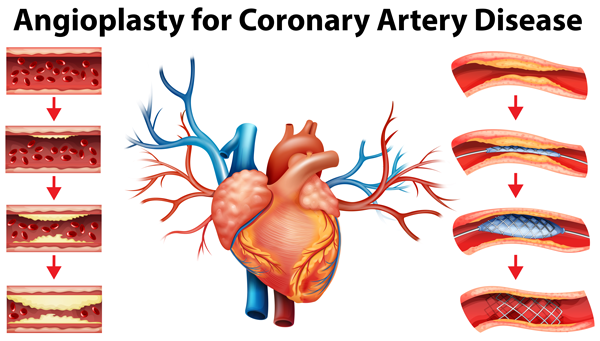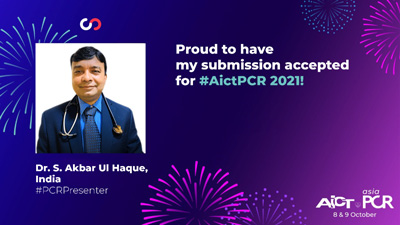
What is Angioplasty?
Angioplasty can improve symptoms of blocked arteries, such as chest pain and shortness of breath. Angioplasty is also often used during a heart attack to quickly open a blocked artery and reduce the amount of damage to your heart. Coronary angioplasty is a procedure used to open clogged heart arteries. Angioplasty uses a tiny balloon catheter that is inserted in a blocked blood vessel to help widen it and improve blood flow to your heart. Angioplasty is a surgery to open narrowed blood vessels that supply blood to the heart. These blood vessels are called the coronary arteries.
A coronary angiogram a per cutaneous procedure, performed via hand (radial) or via leg. If done with a hand, the movement of the patient is not restricted and he can go home early, ideally with a few hours of the procedure. If done with leg, the patient cannot move his leg for about 6 hours. Dr. Syed Akbarul Haque has a vast experience of doing angiograms via hand – a radial angiogram.
Reasons for Angioplasty
Sometimes Plaques build up inside the walls of the arteries, resulting in the narrowing of the arteries. These plaques affect the normal flow of blood, and if the situation gets worse, then blood clots are formed. This condition is known as Atherosclerosis. This condition can happen in any artery including the coronary artery. These are the arteries that supply oxygen-rich blood to your heart and plaque formation in them is known as Coronary Artery Disease.
Procedure of Angioplasty
Before coronary angioplasty is done, a Doctor first tries to know which arteries are blocked, how many of them are blocked, and what is the severity of the blockages. For this purpose, a test known as Angiography is done.
During an angiogram, a small tube called a catheter with a balloon at the end is put into a large blood vessel in the groin (upper thigh) or arm. The catheter is then threaded to the coronary arteries. A small amount of dye is injected into the coronary arteries and an x-ray picture is taken.
This picture will show any blockages, how many, and where they’re located. Once your doctor has this information, the angioplasty can proceed. Your doctor will blow up (inflate) the balloon in the blockage and push the plaque outward against the artery wall. This opens the artery more and improves blood flow.
After the artery is widened, a small mesh tube called Stent generally made of metal is kept inside the artery to keep it widened. Some stents, called drug-eluting stents, are coated with medicines that are slowly and continuously released into the artery. These medicines help prevent the artery from becoming blocked again from scar tissue that grows around the stent.
After the angioplasty is completed, the patient is in ICU for the next 24 hours and then discharged.
Results and further Precautions
After the angioplasty, a patient may start his daily schedule after a week. But he or she will have to have a healthier lifestyle ahead. It includes quitting smoking, exercising, avoiding foods with high cholesterol, reducing and managing stress so as not let the blood pressure shoot up. Additionally, keeping a track of regular health checkups and following the medicine prescription.

